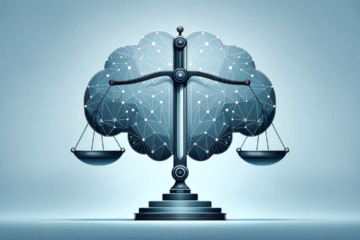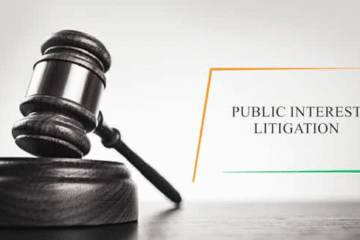
This article is written by Aarushi Chauhan, an intern under Legal Vidhiya
ABSTRACT
The Constitution of India, a monumental legal document, serves as the backbone of the nation’s democratic governance. This article explores its salient features, emphasizing its length and complexity, the balance between federalism and unitary principles, and its secular framework. Key aspects such as the protection of fundamental rights, the role of the judiciary, and the unique amendment process are discussed in depth. The article also sheds light on the emergency provisions and the significance of single citizenship. By examining recent constitutional developments and critical judicial decisions, it illustrates the enduring significance and adaptability of India’s Constitution in addressing modern challenges.
KEYWORDS
Constitution of India, Constituent Assembly, Preamble, Federal Structure, Unitary Bias, Parliamentary System, Secularism, Independent Judiciary, Judicial Review, Fundamental Rights, Directive Principle, Justice, Liberty, Equality, Rule of Law
INTRODUCTION
The Constitution of India came into effect on January 26, 1950. [1]It comprises legal framework that contains rules and regulations that the country is expected to` abide. Its salient features reflect the diverse socio-political landscape of India and the aspirations of its people. Interestingly, it is the longest constitution in the world in written, it consists of 395 articles and now approximately has 470 articles spread over 25 parts, which is in decided way more than any constitution of the world. This extensive nature explains the reasons of vast territory of India as well as a historical background that included provisions of Political
Among its key features is a Parliamentary system of governance, which promotes collaboration between the legislative and executive branches, as well as a federal structure with unitary bias, allowing for a robust central government while still acknowledging state autonomy. The Constitution guarantees fundamental rights to all citizens, fostering equality, freedom, and justice, along with Directive principles of state policy that guide the government in achieving socio-economic objectives.
Moreover, the Constitution represents a mix of rigidity and flexibility, permitting amendments through different procedures to meet the evolving needs of society. It also upholds the principles of secularism, single citizenship, and the separation of powers, which together strengthen democratic governance and protect individual freedoms. These features not only outline the operational framework of the Indian state but also ensure the rights and responsibilities of citizens are upheld, promoting an inclusive society dedicated to justice and equality.
KEY FEATURES [2]
- LENGTHEIST CONSTITUTION OF THE WORLD
The Indian constitution is o.ne of the lengthiest constitutions in the world. The main reason for this is that it is based on Government of India Act, 1935, which was also very lengthy. Other reason was that the founding fathers wanted to accommodate the size, complexity and diversity of the Indian situation. In the present time, Indian constitution has 448 articles, divided into 22 parts and 12 schedules.
- NEITHER PURELY FEDERAL NOR PURELY UNITARY
The constitution of India is neither federal nor unitary. It is a combination of both. In India, the laws of constitution restrict both parliament and state government. Under the constitution, federalism enshrined, but the national interest is the paramount importance. The federal principle is in domination and is one of the basic features of the constitution but it leans in favor of strong centre.
- UNIQUE BLEND OF RIGIDITY AND FLEXIBILTY
It is the combination of rigidity and flexibility as certain provisions in the constitution can be amended with the societal needs. However, some provisions, which come under the basic structure, cannot be altered.
- PARLIAMENTARY SYSTEM
The Constitution of India provides for a parliamentary form of government, where the executive is accountable to the legislature. The President is the official head of state, but the Prime Minister and the Council of Ministers are the actual executive branch. This encourages collusion between the legislative and executive branches, and collective responsibility.
- CONSTITUTIONAL SUPREMACY
The Constitution is the supreme law of the land and any law made by Parliament or the State Legislatures has to be in conformity with its provisions. The judiciary can strike down any law that infringes upon the Constitution, and thus the Constitution is kept as the supreme law of the land.
- ADULT SUFFRAGE
A key feature of the Indian Constitution is its commitment to universal suffrage, which enables all citizens, aged 18 and above to vote in elections as long as they are not disqualified for any reason. The principle of “one person one vote” ensures that every adult citizen regardless of their background, caste, religion or gender has an equal say in choosing their representatives. This democratic system reflects the Constitutions dedication, to upholding fairness and equality in politics.
- SECULAR STATE
The Indian Constitution is secular in nature, it makes sure that the state does not favor any religion; it separates the religion and state. This allows religious freedom and inhibits the persecution of anyone for his or her religion.
- FUNDAMENTAL RIGHTS
The Indian Constitution guarantees its citizens a set of fundamental rights that encompass various aspects of life. These include the right to equality, freedom from exploitation, religious freedom, cultural and educational privileges and the ability to seek legal remedies. These rights are detailed in Part III of the Constitution. Fundamental rights are essential, for nurturing individuals and protecting their liberties. Citizens can defend these rights through channels enabling them to challenge any violations against their rights
- DIRECTIVE PRINCIPLE OF STATE POLICY ( DPSP)
Although not justifiable, the Directive Principles of State Policy (Part IV)[3] are fundamental in providing the state with guidelines in governing. They want to create a just society, economically and socially, they want to make sure that the state’s policies are directed for the welfare of the people, and that includes provisions for education, health, labor unions, etc.
- FUNDAMENTAL DUTIES
Initially, the constitution doesn’t contained the fundamental duties in it. It was the 42nd amendment, which brought this buy the recommendation of Sardar Swaran Singh committee. Nevertheless, they are not enforceable under law.
- CITIZENSHIP
In our country, there is no separate citizenship of union and the states. All citizens have same rights and overall country.
- INDEPENDENT JUDICIARY
Judiciary acts like a guardian of the constitution and protects the citizens of the country. In India, it establishes it’s independency with supreme court at the apex, high court in each state. It is responsible for the interpretation of the constitution. Furthermore, it has powers of judicial review, which allows examining the constitutionality of law and executive actions.
COMPARISON WITH OTHER DEMOCRACIES AND BORROWED FEATURES
The Indian Constitution is notable for its extensive incorporation of elements from various international constitutions, while also featuring distinctive aspects that cater to the needs of Indian society. This discussion examines the influences from other democracies. It tells us how they have contributed to the development of the Indian constitutional framework.
Key borrowed features from different Constitutions[4]
1. The British Constitution:
– Parliamentary Government: The governance structure is based on the British parliamentary system, highlighting the significance of the Prime Minister and the cabinet.
– Rule of Law and Legislative Procedures: These essential principles ensure accountability for all individuals and institutions under the law.
-Single Citizenship and Bicameralism: India offers single citizenship regardless of state or territory, and it features a bicameral legislature consisting of the Lok Sabha (House of the People) and the Rajya Sabha (Council of States).
2. United States Constitution:
– Fundamental Rights: In a manner akin to the U.S. Bill of Rights, the Indian Constitution guarantees fundamental rights to its citizens, safeguarding personal freedoms.
-Judicial Review and Independence: The authority of judicial review empowers courts to annul laws that violate the Constitution, providing a check on legislative authority.
-Impeachment Process: The procedures for impeaching the President and judges draw inspiration from U.S. practices.
3. Ireland:
-Directive Principles of State Policy: These principles serve as guidelines for the state in formulating policies aimed at achieving social and economic justice.
-Presidential Elections and Rajya Sabha Nominations: The process for electing the President and appointing members to the Rajya Sabha is influenced by practices from Ireland.
4. Australia:
-Concurrent List: This allows both the central and state governments to make laws on specific subjects, reflecting a federal structure.
-Joint Sitting of Parliament: The provision for a joint sitting of both Houses to resolve deadlocks is adapted from Australia.
5. Canada:
-Strong Central Authority in Federalism: The Canadian model has had a significant impact on India’s federal structure, especially regarding the distribution of powers between central and state governments.
-Residue Powers with Central Government: Like Canada, any residual powers that are not listed are assigned to the central government.
6. Germany:
-Emergency Provisions: The suspension of fundamental rights during emergencies is the provisions found in the Weimar Constitution.
7. France:
-Ideals of Liberty, Equality, and Fraternity: These principles are in the Preamble, reflecting the revolutionary ideals of France.
8. South Africa:
-Proportional Representation in Elections: The election process for certain legislative bodies is influenced by practices from South Africa.
9. Japan:
-Procedure Established by Law: This concept shapes legal processes in India, ensuring that laws are enacted through established procedures.
KEY JUDICIAL DECISIONS
Judicial decision plays a crucial role in shaping legal precedent and it is as follows:
- In the landmark case of Kesavananda Bharti v. State of Kerala(1973)[5] the court addressed that even though the parliament has power to amend but it cannot alter its basic structure. It established the ‘BASIC STRUCTURE DOCTRINE’. The Supreme court ruled that if there will be any amendment that will affect the fundamental right or they compromise constitution’s essential features then it will be void.
- The central issue in the case Golak Nath v. State of Punjab (1967)[6]revolved around the question whether fundamental rights could be amended by the parliament or not. The court rules that parliament could not amend fundamental rights under article 368.
The judgment emphasized that the fundamental right are sacrosanct and immune from legislative alteration. This ruling later was overruled by Kesavananda Bharti, which allowed the amendments but maintained the integrity of the constitution’s structure.
- Minerva Mills v. Union of India (1980) [7]– this case examines the legal principle of ‘Basic Structure Doctrine’. It held that amendments should disturb the balance between the fundamental rights and Directive principles state policy. It signifies that the parliament‘s power to amend is not absolute. Thus, make the judicial review more importance.
- The fact of the case Indira Gandhi v. Raj Narain (1975[8]) illustrates, Raj Narain alleged Indira Gandhi to be involved in corrupts practices during the campaign of elections. The case examines whether elections laws violated the rights of free and fair elections or not.
It was held that laws protecting political interest could not override fundamental rights. It reinforced the principle of equality before law and free fair electoral practices.
- In the case Maneka Gandhi v. Union of India (1951[9]), the court addressed the preventive detention laws and there compatibility with article 21.the court ruled that in some cases ‘personal liberty’ have some restrictions. It further explains with more interpretations that law must be free, fair and reasonable.
- The central issue in the case AK Gopalan v. state of madras (1950)[10]was whether the preventive detention laws are constitutional or not? The Supreme Court upheld that validity of preventive detention laws till the time they do not violates article 21.
- In the year 1951, the court ruled in Shankari prasad Singh deo v. Union of India[11]that parliament can amend Fundamental Rights. It validates the first amendment, which limited to applicability of certain rights.
- In the landmark case of Sajjan Singh v. state of Rajasthan (1965[12]) the Supreme Court upheld that under article 368 the parliament as power the amend the constitution. However, this judgment later was challenged in the cases like Golak Nath and Kesavananda Bharti.
- In addressing the question of ‘do amendments post Kesavananda Bharti violates the basic structure doctrine’, the court in Waman Rao v. Union of India( 1981)[13]held that any amendment made after the Kesavananda Bharti case must comply with the basic structure doctrine and must be subjected to judicial review.
RECENT DEVELOPMENTS
Recent constitutional changes are markers of a vigorous governance system in India. [The revocation of Article 370 on Jammu and Kashmir] , [ the 101st Constitutional Amendment that led to introduction of Goods and Services Tax (GST), which unified India’s tax structure] and the decision in Navtej Singh Johar v. Union of India, (2018), where the Supreme Court decriminalized Section 377 Indian Penal Code] – all demonstrate changing reading evident on fundamental rights
CONCLUSION
In conclusion, the key features of the Constitution are essential to a well-functioning democracy. Elements like the rule of law, separation of powers, and the safeguarding of Fundamental Rights are vital for ensuring that governance is fair, just, and responsive to the people’s needs. The Constitution enables citizens to thrive in a society that prioritizes freedom, justice, and social equality.
The Constitution’s ability to adapt, particularly through the amendment process outlined in Article 368, underscores its dynamic character. This process allows the Constitution to change in response to societal shifts while preserving its core values. The doctrine of the basic structure, established in the Kesavananda Bharati case, acts as an important safeguard against arbitrary amendments. It ensures that while modifications can occur, the fundamental principles remain unchanged.
Grasping these features is crucial for nurturing an informed and engaged citizenry. When people understand their rights and responsibilities under the Constitution, they can actively participate in democratic processes and advocate for justice and accountability. This engagement fortifies democracy, making it vibrant, inclusive, and resilient to challenges.
Ultimately, the relationship between these constitutional features and citizen involvement shapes the strength and quality of a democracy. A well-informed public, dedicated to upholding constitutional values, becomes the driving force behind a just and equitable society, where democracy transcends mere governance and embodies a way of life rooted in respect, participation, and the protection of human dignity.
REFERENCES
- Kesavananda Bharati v. State of Kerala, AIR 1973 SC 1461
- Golak Nath v. State of Punjab, AIR 1967 SC 1643
- Minerva Mills Ltd. v. Union of India, AIR 1980 SC 1789
- Indira Gandhi v. Raj Narain, AIR 1975 SC 2299
- Maneka Gandhi v. Union of India, AIR 1978 SC 597
- A.K. Gopalan v. State of Madras, AIR 1950 SC 27
- Shankari Prasad Singh Deo v. Union of India, AIR 1951 SC 458
- Sajjan Singh v. State of Rajasthan, AIR 1965 SC 845
- Waman Rao v. Union of India, AIR 1981 SC 271
- Byju’s, Golaknath Case, https://byjus.com/free-ias-prep/golaknath-case/ (last visited Sept. 18, 2024)
- ipleaders, Golaknath C. v. State of Punjab (1967): Overview and Analysis, https://blog.ipleaders.in/golaknath-c-v-state-punjab-1967-overview-analysis/ (last visited Sept. 18, 2024)
- Vajiram & Ravi, Indian Constitution: Features and Significant Provisions, https://vajiramandravi.com/quest-upsc-notes/indian-constitution-features-and-significant-provisions/ (last visited Sept. 18, 2024)
- Next IAS, Constitution of India, https://www.nextias.com/blog/constitution-of-india/ (last visited Sept. 18, 2024)
- Byju’s, Major Features of the Constitution, https://byjus.com/free-ias-prep/major-features-of-the-constitution/ (last visited Sept. 18, 2024)
- Launchpad Education, Salient Features of Indian Constitution, https://launchpadeducation.in/salient-features-of-indian-constitution/ (last visited Sept.18, 2024)
- Drishti IAS, Salient Features of Indian Constitution, https://www.drishtiias.com/to-the-points/Paper2/salient-features-of-indian-constitution (last visited Sept. 18, 2024)
- Study IQ, Salient Features of the Constitution of India, https://www.studyiq.com/articles/salient-features-of-constitution-of-india/ (last visited Sept.18, 2024)
[1] Byju’s, Major Features of the Constitution, https://byjus.com/free-ias-prep/major-features-of-the-constitution/ (last visited Sept. 18, 2024)
[2] Study IQ, Salient Features of the Constitution of India, https://www.studyiq.com/articles/salient-features-of-constitution-of-india/ (last visited Sept.18, 2024)
[3] Vajiram & Ravi, Indian Constitution: Features and Significant Provisions, https://vajiramandravi.com/quest-upsc-notes/indian-constitution-features-and-significant-provisions/ (last visited Sept. 18, 2024)
[4] Launchpad Education, Salient Features of Indian Constitution, https://launchpadeducation.in/salient-features-of-indian-constitution/ (last visited Sept.18, 2024)
[5] Kesavananda Bharati v. State of Kerala, AIR 1973 SC 1461
[6] Golak Nath v. State of Punjab, AIR 1967 SC 1643
[7] Minerva Mills Ltd. v. Union of India, AIR 1980 SC 1789
[8]Indira Gandhi v. Raj Narain, AIR 1975 SC 2299
[9]Maneka Gandhi v. Union of India, AIR 1978 SC 597
[10]A.K. Gopalan v. State of Madras, AIR 1950 SC 27
[11] Shankari Prasad Singh Deo v. Union of India, AIR 1951 SC 458
[12] Sajjan Singh v. State of Rajasthan, AIR 1965 SC 845
[13] Waman Rao v. Union of India, AIR 1981 SC 271
Disclaimer: The materials provided herein are intended solely for informational purposes. Accessing or using the site or the materials does not establish an attorney-client relationship. The information presented on this site is not to be construed as legal or professional advice, and it should not be relied upon for such purposes or used as a substitute for advice from a licensed attorney in your state. Additionally, the viewpoint presented by the author is personal.




0 Comments